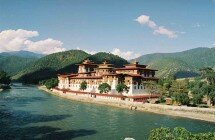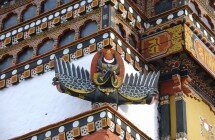
The Laura of St. Sabbas or Mar Saba is a Greek Orthodox monastery overlooking Kidron Valley between the Jerusalem and the Dead Sea.
The monastery was founded by St. Sabbas of Mutalaska, Cappadocia circa 483 CE. Today, the complex houses around 20 monks. It is considered one of the oldest inhabited monasteries in the world, and still, maintains many of its ancient traditions. One is the restriction of women entering the main compound. The only building that women can enter is the Women’s Tower.
The monastery holds the relics of St. Sabbas.
Mar Saba was also the home of St. John of Damascus (676 – 749 CE), a key religious figure in the Iconoclastic Controversy, who, around 726 CE, wrote letters to the Byzantine emperor Leo III the Isaurian refuting his edicts prohibiting the veneration of Christian religious icons. John worked as a high financial officer to the Muslim Caliph Abd al-Malik.
Eventually, he felt a higher calling and migrated to the Judean desert, where he was ordained a monk (monastic priest) at the Monastery of Mar Saba. St. John’s tomb lies in a cave under the monastery.
Sabbas’ relics were taken by Crusaders in the 12th century and remained in Italy until Pope Paul VI returned them to the monastery in 1965 as a gesture of good will towards the Orthodox Church.
By guided tour only.
 Batumi georgia
Batumi georgia  St. Nicholas Armenian Monastery, Tel Aviv...
St. Nicholas Armenian Monastery, Tel Aviv...  River Rafting in Rishikesh
River Rafting in Rishikesh  Dudhsagar Trek in Goa
Dudhsagar Trek in Goa  Jerusalem
Jerusalem  Chapel of the Ascension Jerusalem
Chapel of the Ascension Jerusalem
 Garden of Gethsemane Jerusalem
Garden of Gethsemane Jerusalem
 The Coenaculum
The Coenaculum  Via Dolorosa Jerusalem
Via Dolorosa Jerusalem
 King David’s Tomb, Jerusalem
King David’s Tomb, Jerusalem  Holy Sepulcher Jerusalem
Holy Sepulcher Jerusalem  Western Wall Jerusalem
Western Wall Jerusalem  The Roman Byzantine Cardo Jerusalem
The Roman Byzantine Cardo Jerusalem
 The Wide Wall Jerusalem
The Wide Wall Jerusalem
 Church of St. John the Baptist, Ein Karem...
Church of St. John the Baptist, Ein Karem...  Church of the Visitation, Ein Karem, Jeru...
Church of the Visitation, Ein Karem, Jeru...  Yad Vashem, Jerusalem
Yad Vashem, Jerusalem  City of David, Jerusalem
City of David, Jerusalem  Western Wall Tunnel Tour Jerusalem
Western Wall Tunnel Tour Jerusalem  Israel Museum Jerusalem
Israel Museum Jerusalem  Church of St. Peter in Gallicanto, Jerusa...
Church of St. Peter in Gallicanto, Jerusa...  Dead Sea
Dead Sea  Qumran, the Holy Land
Qumran, the Holy Land  Bahai Gardens and German Colony
Bahai Gardens and German Colony  Acre (Akko)
Acre (Akko)  Clock Tower, Tel Aviv – Yaffo
Clock Tower, Tel Aviv – Yaffo  Nazareth, the Holy Land
Nazareth, the Holy Land  Kanna (Cana), the Holy Land
Kanna (Cana), the Holy Land  Mount Tabor (Tavor)
Mount Tabor (Tavor)  Mt. Beatitudes, The Holy Land
Mt. Beatitudes, The Holy Land  Tabgha, The Holy Land
Tabgha, The Holy Land  Primacy of Petros, Tabgha
Primacy of Petros, Tabgha  Capernaum, The Holy Land
Capernaum, The Holy Land  Yardenit, The Holy Land
Yardenit, The Holy Land  Tel Dan, The Holy Land
Tel Dan, The Holy Land  Caesarea Philippi, The Holy Land
Caesarea Philippi, The Holy Land  Mt. Bental, Golan Heights
Mt. Bental, Golan Heights  Golan Heights Winery
Golan Heights Winery  Mt. Beatitudes, The Holy Land
Mt. Beatitudes, The Holy Land  Yaffo (Jaffa), The Holy Land
Yaffo (Jaffa), The Holy Land  Old Train Station, Yaffo – Tel-Aviv
Old Train Station, Yaffo – Tel-Aviv  Tel Aviv, Israel
Tel Aviv, Israel  Sarona, Tel Aviv
Sarona, Tel Aviv  Be’er Sheva & Tel Sheva, The Ho...
Be’er Sheva & Tel Sheva, The Ho...  Sde Boker, The Holy Land
Sde Boker, The Holy Land  Avdat (Ovdat), The Holy Land
Avdat (Ovdat), The Holy Land  Makhtesh Ramon, The Holy Land
Makhtesh Ramon, The Holy Land
 The Kingdom of Jerusalem, The Holy Land
The Kingdom of Jerusalem, The Holy Land  Belmont (Tzuba)
Belmont (Tzuba)  The Zodiac alleys, Tel Aviv – Yaffo
The Zodiac alleys, Tel Aviv – Yaffo  Yaffo Hill, Tel Aviv – Yaffo
Yaffo Hill, Tel Aviv – Yaffo  Yaffo Lighthouse, Tel Aviv – Yaffo
Yaffo Lighthouse, Tel Aviv – Yaffo  Yaffo Museum, Tel Aviv – Yaffo
Yaffo Museum, Tel Aviv – Yaffo  The Greek Orthodox Monastery, Tel Aviv Ya...
The Greek Orthodox Monastery, Tel Aviv Ya...  The Church of St. Petros and St. Tabitha,...
The Church of St. Petros and St. Tabitha,...  St. Peter’s Church, Tel Aviv Yaffo
St. Peter’s Church, Tel Aviv Yaffo  Immanuel Church, Tel Aviv – Yaffo
Immanuel Church, Tel Aviv – Yaffo  St. Nicholas Armenian Monastery, Tel Aviv...
St. Nicholas Armenian Monastery, Tel Aviv...  Al-Bahr Mosque, Tel Aviv – Yaffo
Al-Bahr Mosque, Tel Aviv – Yaffo  Mahmoudiya Mosque, Tel Aviv – Yaffo
Mahmoudiya Mosque, Tel Aviv – Yaffo  The Flea Market, Tel Aviv – Yaffo
The Flea Market, Tel Aviv – Yaffo  Gorny Convent, Ein Kerem
Gorny Convent, Ein Kerem  Ussishkin House, Tel Aviv – Yafo
Ussishkin House, Tel Aviv – Yafo  Pagoda House, Tel Aviv – Yafo
Pagoda House, Tel Aviv – Yafo  The Russian Embassy, Tel Aviv – Yaf...
The Russian Embassy, Tel Aviv – Yaf...  Berlin-Psovski Building, Tel Aviv –...
Berlin-Psovski Building, Tel Aviv –...  Hagana Museum, Tel Aviv – Yafo
Hagana Museum, Tel Aviv – Yafo  Bialik House, Tel Aviv – Yafo
Bialik House, Tel Aviv – Yafo  Arie Weiss Home, Tel Aviv – Yafo
Arie Weiss Home, Tel Aviv – Yafo  Chariton Monastery, The Holy Land
Chariton Monastery, The Holy Land  Ein Mabu’a, The Holy Land
Ein Mabu’a, The Holy Land  St. George Monastery, The Holy Land
St. George Monastery, The Holy Land  Euthymius Monastery, The Holy Land
Euthymius Monastery, The Holy Land  Good Samaritan Inn, The Holy Land
Good Samaritan Inn, The Holy Land  St. Gerasimos Monastery, The Holy Land
St. Gerasimos Monastery, The Holy Land  Qasr el Yahud, The Holy Land
Qasr el Yahud, The Holy Land  Hội An
Hội An  Ha Long Bay
Ha Long Bay  Ancient Acropolis in Bergama
Ancient Acropolis in Bergama  Mount Abu in Rajasthan
Mount Abu in Rajasthan  Lakshadweep – India’s tiniest...
Lakshadweep – India’s tiniest...  Kodaikanal – The Princess of Hill S...
Kodaikanal – The Princess of Hill S...  Gal Vihara Statues
Gal Vihara Statues  Punakha Dzong
Punakha Dzong  Trashichho Dzong
Trashichho Dzong  Taktshang Goemba
Taktshang Goemba  National Memorial Chorten
National Memorial Chorten  Coorg – Scotland Of India
Coorg – Scotland Of India  Samadhi Statue
Samadhi Statue  Ruwanwelisaya Stupa
Ruwanwelisaya Stupa  Andaman and Nicobar Islands
Andaman and Nicobar Islands  Sepilok Orangutan
Sepilok Orangutan  Victoria Memorial
Victoria Memorial  Ladakh – India’s Little Tibet
Ladakh – India’s Little Tibet  Bhangarh Fort
Bhangarh Fort  Tokyo Midtown
Tokyo Midtown  Asakusa and Sensoji Temple
Asakusa and Sensoji Temple  Tokyo Sky Tree
Tokyo Sky Tree  Tokyo Dome City
Tokyo Dome City  Sunshine City Aquarium
Sunshine City Aquarium 